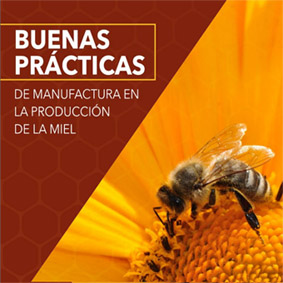HONEY WITH ANTIBIOTIC RESIDUES IMPORT ALERT
June 27th, 2022
 Versión en Castellano
Versión en Castellano (Espacio Apícola, June 27th 2022) Antibiotics residues in honey are a symptom of a lack of Good Manufacturing Practices, which for our specific activity we call Good Beekeeping Practices.
(Espacio Apícola, June 27th 2022) Antibiotics residues in honey are a symptom of a lack of Good Manufacturing Practices, which for our specific activity we call Good Beekeeping Practices.The Food and Drug Administration of the United States (FDA) frequently publishes alerts of different irregular events in food imports, among them the appearance of prohibited antibiotics in honey, which constitutes a very important help to precisely assess these Good Beekeeping Practices of the countries that export honey to the main global buyer of this product.
In Argentina, the paradigmatic case was the appearance of nitrofurans in honey in 2003. It was a very big blow for Argentine Beekeeping, economically, mentally and technically speaking, since certain products of common use at the beginning of the beekeeping season, used mainly to stabilize and purge the hives in the breeding development period prior to the season, they contained this active ingredient whose veterinary use had been prohibited for some years. After that year in Argentina we do not remember serious incidents of this type but, in addition, Argentine Beekeeping took another step in understanding the nutritional requirements of bees, overcoming the prophylactic use of certain products that contained antibiotics.
The presence of antibiotics in honey imported by the United States is still on the breaking news, particularly shipments from Asia.
Contemporary to nitrofuran, chloramphenicol prevailed in Asia, both first-generation antibiotics, with a very broad spectrum and even risky for human health. The last active reports of chloramphenicol date from China, India, Malaysia, Mexico, Moldova, Peru, Russia, Thailand and Vietnam in 2014, Armenia in 2016 and Ukraine in 2018, which raised serious suspicions of Chinese honey import from a third country at that time.
In June 2022, the eye was on shipments of honey, from Pakistan, with ciprofloxacin residues. This antibiotic principle appeared for the first time in honey imported into the United States from Malaysia, Thailand and China in 2009 and is valued together with enrofloxacin as it is also a product of its metabolism. It reappeared in Chinese and Hong Kong honey in 2013 and 2014, then in India and Egypt in 2017 and 2018. On June 23rd, 2022, ciprofloxacin reappeared, but now in honey from Pakistan.
In addition to Good Beekeeping Practices signals, these sequences hint at other possible irregularities to check.
The most important thing is to rule out the use of any antibiotics in the beehives. Do not carry out treatments with synthetic drugs if the period of deficiency of the product overlaps the nectar flow or with supers already arranged over the brood chambers and do not harvest the honey from the treated brood chambers, using these combs only to make divisions or as a reserve.
Data Source: FDA - IMPORT ALERT 36-04, June 23rd 2022.-
Information generated by "Espacio Apícola" the Argentine Beekeepers' Magazine apicultura.com.ar

